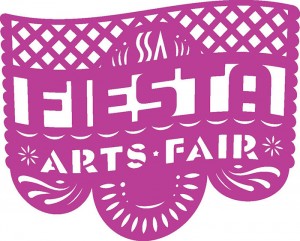
Let’s talk about Art Fairs for a second. When I say Art Fair, most Glasstire readers probably think of big-convention center events with gallery-booths representing contemporary artists. Usually the work is expensive, but there are cocktails. However, if I was to mention an art fair to an average family of four, I have a hunch they would think of another kind of art fair— an outdoor event or community festival with artist booths, live demos and music, hot dogs and stuff for kids to do. Much of the work is still pricey, but certainly more accessible. I haven’t been to an overwhelming number of either kind. The last gallery fair I attended was Pulse LA last September. It was like doing a death march in Chelsea with all of the galleries even closer together, so it was both enjoyable and less tiring.
Last weekend (4/21/12) I was invited to jury the awards for the Fiesta Arts Fair at the Southwest School of Art in San Antonio. The major difference at this kind of fair is that the artists themselves are manning their booths. Often schlepping their work all over the country, these artists are like traveling bands, setting up their equipment, showing and selling their work, conducting their own transactions, and tearing it all down to speed off to the next event. I can’t help but admire artists that hit the pavement to represent themselves and run their own operation. They tend to get marginalized in the gallery scene, and there are probably several arguments as to why or why not.
Even though there are distinct differences between the two kinds of fairs, both sit on the threshold of selling and showing, academic and common contexts, and gallery vs. artist-run platforms. There’s always that argument about the line between fine art and craft, and comparing the two types of fairs is a good place to start I imagine. The Southwest School of Art is situated right in the center of this threshold— between its rich historic roots and recent upgrade to an accredited institution (offering a BFA this fall and dropping “Craft” from its official title). SSA has positioned itself to become an independent player at the crossroads of contemporary and traditional— adding academic depth to an already accessible, community-driven venue for art appreciation and education.
Dropping “Craft” from the name of the school certainly says something about the school’s evolving identity (it began as Southwest Craft Center in 1965.) I think there are more implications here that come from the disconnect between “art” and “craft.” Not all would think “craft” is a bad word, but it has connotations that are apparently strong enough for SSA to drop it. Particularly in SSA’s case, I think it’s a major statement about the term. It should spark much discussion (I’m thinking of HCCC and Glassell here).
Putting the bird’s eye view of fairs and festivals aside, the artists on display at the Fiesta Arts Fair all displayed strong and personable characteristics in their work. The Fair gives awards for Contemporary and Traditional Design, Craftsmanship, Creative Expression, and of course the Best of Show prize. I have to emphasize that as an artist, playing the role of juror is challenging. No matter how much art one has seen, selecting winners is always a mixed bag of taste, context, and no matter how educated— subjective. But several artists stood out from the group, advancing the positive qualities of being on the threshold that SSA itself sits.
Two examples of Contemporary Design and thought were Rone Prinz (Woodland Hills, CA) and Jaime Jo Fisher (Austin, TX). Where Prinz honed in on perfected motifs and refined use of metal on a delicately small scale (with an irresistible steam-punk style), Fisher presented a fresh set of jewelry made up of assembled discarded fragments (like part of a Cabbage Patch doll’s shoe, a fossilized termite and polymer clay). She ends up with a variety of colors and textures, reclaiming these found pieces that reflect a restorative eye with uncommon appeal.
Craftsmanship went to Richard Ryan (Bpurbonnais, IL) who combines blown and carved glass into rich compositions resembling organic matter from the ocean floor. Glass is always a strange category— blown glass, stained glass and warm glass all end up feeling overly-decorated and delicate. Glass collectors probably don’t have children, and have lots of empty end tables and big windows to display the transparent qualities of the medium. Ryan’s work was fresh, but also looked painfully laborious. Like Austin artist Glenda Kronke (a favorite of mine in the glass field), I stopped thinking about the glass and more about the work.
Traditional Design went to Li Wang (Palm Coast, FL). He had some of the most beautiful, soft and sparkling impressionist paintings of coastal scenery. I tend to see a lot of this imagery (being on the Texas coast) and so often overlook it, but Li Wang’s work really demonstrates how this kind of painting can produce a genuine experience, and his classy presentation had me standing in his booth longer than usual.
Creative Expression was probably the hardest prize to single out. I mean, how do you choose one artist in a pool of already juried artists and say one has more creativity than another? Instead of perfecting the technical aspects of a medium, I figured this award would focus on an artist’s free-flow that somehow ended up in physical form. I ended up at Laura Maclay’s booth (Austin, TX), whose child-like illustrations arranged in surreal juxtapositions had a consistent style, both on fabric and canvas. When asked about how she came up with these, she didn’t refer to any specific folklore, instead saying she just sort of improvises (another advantage of speaking to the artists themselves, rather than have a gallerist try to talk up some crazy internal mythology.) Maclay seemed almost surprised to be asked about her ideas rather than her process. I found this to be true with several of the artists, when asked about concept rather than craft, the answers were often unguarded and improvisational, which was refreshing in a world of over-edited artist statements.
The best work in any group exhibition or fair usually has to combine all of the above elements: it is contemporary enough without losing traditional reference, it is imaginatively loose but intently focused, and the attention to detail and refined execution should finish it off. There were a good number of artists at this level. I am especially partial to found objects and assemblage, always curious how artists repurpose material. Lots of mixed media artists populated the show— all worthy of mention— but this also made me more critical. Anthony Pack’s (Overland Park, KS) work immediately struck me.
His robot figures are a combination of TV-cowboy nostalgia with sci-fi tinkering. He reclaims vintage material purposefully and with restraint, which adds to the complex sense that assemblage can create— a bit of sadness for a past long gone, but also a remix of timely charm. The entire booth extended this sentiment— the walls had sketches and notes (some erased and drawn over) along with small wood reliefs of creepy, cartooned vintage yearbook portraits with phrases like “what do I do now?” and “socially acceptable” pasted on from newspaper clippings.
Though these personified robots were the focus of his work, the whole booth was an installation of idiosyncratic detail, raw creativity, refined attention and humorous relevance. Coining his work “Urban Folk Art,” Pack uses the terminology akin to “craft” that some may be turned off by, but his work shows how the materials of the past can be impressively remade and re-imagined.
I would never suppose one Art Fair experience is intrinsically “better” than the other. Both have remarkable qualities that appeal to a variety of tastes, and let’s not deceive ourselves, both types of fairs are economic generators. The bottom line is that the Southwest School of Art, while expanding its scope and distancing itself from the connotations of craft, is still deeply connected and committed to art as an accessible, enjoyable experience.
________________
John Aäsp is currently Visual Arts Director at Rockport Center for the Arts on the Gulf Coast of Texas, where he also serves as Managing Director of the Rockport Film Festival. He received his MFA from RIT in 2006. Other than writing, making video art and electro-beepy music, John can’t stop making excuses for his cats and his love for motorsports. johnaasp.com, johnaasp.blogspot.com, beachblanketblammo.com


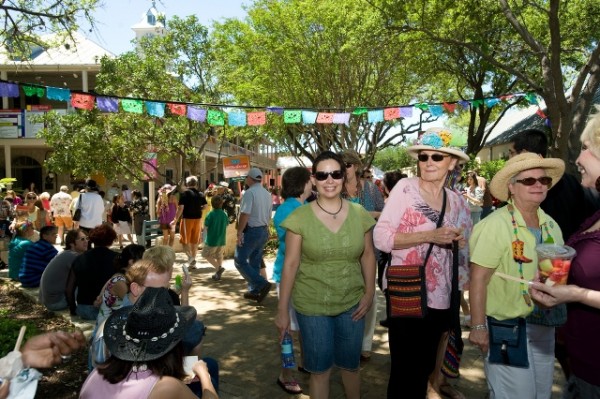
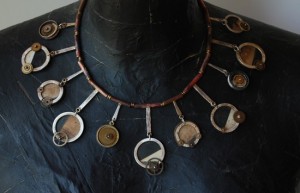
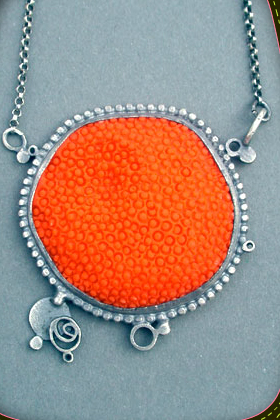
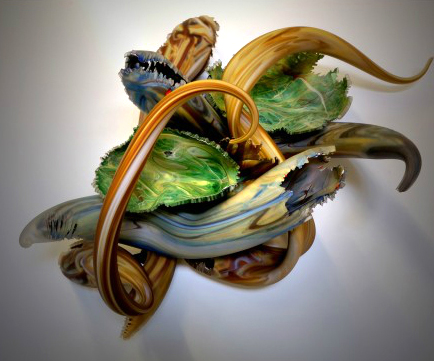
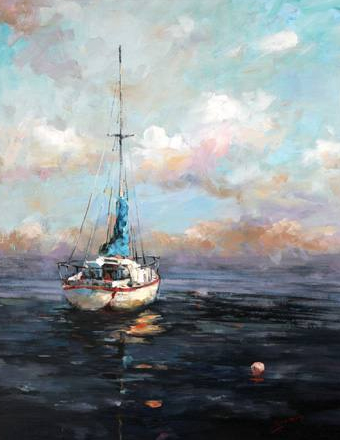
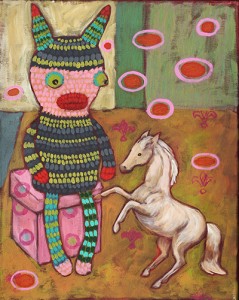

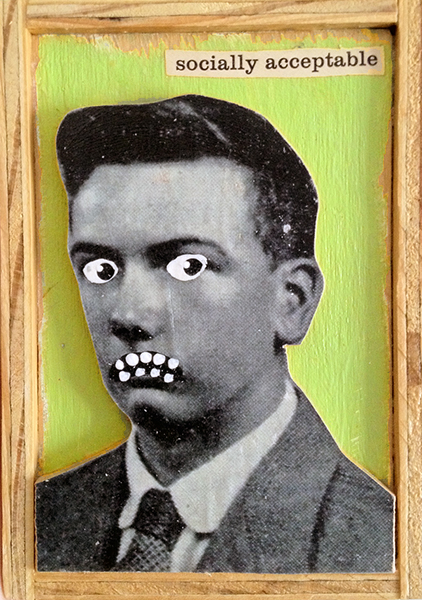

29 comments
Please allow me to clarify that the Fiesta Arts Fair is a fundraiser. Our artistic standards and are significantly different for this event. Proceeds go toward our mission which is to provide serious studio education and exhibition in excellent facilities with highly-qualified faculty.
While Fiesta Arts Fair is a popular event and we do believe in access to art experiences for a wide public, it is important to convey that the work that is included in arts or craft fairs of this type generally is not in the same league as the work in the other type of art fairs, which is the kind of work we present in our exhibition spaces at the Southwest School of Art.
After participating in this year’s Fiesta Art Fair I came away with a good feeling about San Antonio, its art, culture, and friendly people. As a traveling artist I show coast to coast and have the opportunity to rub shoulders with all kinds of folks. The Southwest School of Art should be very proud to host such a fine event. I am somewhat surprised that the director felt it necessary to distance herself and her school from the Fiesta art fair.
Some of the smartest and most interesting people that I have ever known are men and women I have met while participating in similar art fair events. These artists who survive and prosper to the extent that they actually make a good living while selling their art should be congratulated; not slammed or dissed by the very school that is using the show as a fund raiser.
Funny, but selling my own art has allowed me to raise three sons, one an art instructor in Ann Arbor at the University of Michigan, and another an accomplished culinary chef. Their artistic educations were paid in part by the sale of my art along with their own initiatives and scholarship. My oldest son is a graduate of the Cranbrook Academy of Art in Detroit and studied on art scholarship in Edinburg, Scotland. When asked what it is that his father does for a living he is proud to let people know that I do art fairs. I am glad that he does not hide in an ivory tower the way that some academics and art critics seem to often do.
My one dislike about art and design schools, including my own university where I received my own art education, is that art schools fail to prepare students to make a living. Art can be a business. Like any good business, selling your own art takes skill, knowledge and the ability to market.
Dear Paula Owen,
I looked at your standards for the exhibitions you do at SW School of art, they’re actually pretty lousy. Much of your exhibition schedule is filled with student shows, you’re not exactly DIA Art Foundation.
I also looked into you. I don’t think that your paintings would have passed the jury at Fiesta Art Fair. I think you would have stayed home that weekend. Your paintings are un-original and they smack of derivative work. I’d be surprised if you could make a living selling them in galleries, or art fairs of any kind, which is, I guess why you are in Art Administration.
The school you are the president of doesn’t even have an accredited degree program.
I wonder where you got this inflated idea of yourself. You do not show in any serious galleries as far as I can see. You haven’t published anything of note in your field. The corporate collections that your work is in pales in quality in comparison to the corporate collections that the artists you are insulting are in.
I’m sure you are aware of the Société des Artistes Indépendants. For everyone else reading this article, I will explain. The Société des Artistes Indépendants was a group of artists that went on to include everyone from Miro, Kandinsky, Malevich, Braque, Chagall…well, basically everyone of note in 20th century art. They formed this group of independent artists in Paris and they marketed their work themselves because the established gallery and university environments were found to be wanting.
I would also like to point out that very few of the creative geniuses in visual arts in the 20th century had B.A.’s in Art. They also weren’t the presidents of art schools.
I couldn’t agree more with your appraisal of the snobbery both in academia and some (but not all) galleries. I have been selling my work for over 16 years but find it excruciatingly hard to break into the gallery world. Although I do have a B.S. in Interior Design, I am a self-taught artist and have seriously considered doing art shows. I find it so hypocritical that persons can earn a B.A. or M.F.A. in art, be less than successful artists and then go and TEACH art or ADMINISTRATE artists, art schools, etc. There truly is a separate set of “standards” for these people who pass judgement on the worthiness of other artist’s work but yet never or rarely show their own…wonder why???
As a participant in this year’s Fiesta Arts Fair I think it only fair to mention that our (the artists’) standards and efforts can also differ when taking into consideration where we will be showing our work. For us artists the outdoor art events are also fundraisers – or at least we hope they are.
My efforts in the studio are always driven by whether the work is intended for a gallery or a street fair. I have work that I would most likely never show at an outdoor fair because, through experience, I find that, in general, the audience is just not there for that particular work.
As full time working artists we cannot devote a week of our time, all the effort necessary, and thousands of dollars of our money to participate in an outdoor event and bring work that is likely not to sell. That’s not why we’re there. For many of us the outdoor art events are a choice and a means to an end – to bring in cash flow, provide a livelihood, and support our other artistic efforts.
Galleries can bring in thousands of people over the course of a year that may see an artist’s work if it happens to be hanging at that moment. They can cultivate buyers over time and provide a more focused market for any one artist’s particular work.
Exhibiting at art centers, for working artists, often can be a heady and enjoyable experience, but a luxury that many of us can’t afford since sales are seldom in that kind of venue and many of us can’t afford to tie up work for that length of time with no return.
An outdoor event can provide tens of thousands (some of the bigger events hundreds of thousands) of passers by in one weekend. It’s a “shotgun” approach for us artists and it makes sense to bring work that, in our estimation while still trying to be true to our particular artistic vision, has the greatest chance of appealing to the largest audience possible. That doesn’t always allow for us to strictly pay attention only to our own aesthetic dictates. In a situation like that, with so much on the line, we must pay attention to the audience and try to anticipate, on some level, the tastes of those attending.
If the outdoor shows marketed their event to a more artistically discerning segment of the population, and brought in a more artistically sophisticated and savvy audience the quality of work sent in for application and ultimately what will be shown in the tents would reflect the show’s efforts.
In the meantime the outdoor events are what they are and they do serve a purpose to everyone – participants, audience, and the organization putting them on. As long as they remain what they are I (and my fellow artists) will use them to further our goals and purposes.
Great comment, Edward. Thanks for the participating artist point of view.
Thanks Edward. Very thoughtful response. I appreciated it.
In response to Ms. Owen’s “clarification”:
First off, yikes! Isn’t it kind of obvious that artwork is different at arts/crafts festivals than at contemporary art fairs? I think the article sort of hits on this…and even tried to positively spotlight some artists who may not have otherwise been highlighted.
Also, it seems like Ms. Owen is minimizing the artists that participate in Fiesta Arts Fair. I’m not sure any of the artists would be too happy to know that they are only there to raise money for “serious studio education and exhibition.” (Seriously?!) I myself got my start as a showing artist participating in art festivals and now am represented by a ‘reputable’ gallery.
Maybe the artists are happy to support the school regardless of how they market (or clarify) the festival, but I’m sure at least a few of them have art degrees from places like the SW School. Is SW School saying that these artists are not “serious” about what they do?? Is SW School (including Ms. Owen) suggesting that ‘art festival art’ is not worth being mentioned or discussed in a fine-art context? Seems like an overly blanketed statement. What about the thousands of people there buying it (including me)? Are we being marketed sub-standard art (from SW School’s standards) to help pay for “big league” art?
I thought the article was showing the positive aspects of an event held by a school that is growing and changing, but I don’t think it helps SW School by putting down the quality of art in one of their major events. Again, yikes!
Frieze Art Fair just opened in NY. Aside from sharing three of six letters (including the initial F), other comaprisons with the Fiesta Art Fair are in order:
In 1986, fresh out of RISD, I carted an installation of enormous carved wooden plants to craft fairs all over Connecticut, Massachusetts and Rhode Island, and learned by experience that although “high art” is admired in that context, it doesn’t sell. I won best of show ribbons as my neighbors raked in the cash. There is a gap between what people like to look at and think about, and what they will pay for. This is true even at Frieze, where there is a formal distinction between “special projects” and regular merchandise; to ensure a lively fair, they have invited a dozen projects that are non-commercial.
Individual works of art at Frieze may be pricier, but the overall economic impact of the two kinds of fairs may not be so disproportionate. Sure, Fiesta didn’t gross anything like Frieze for its organizers or exhibitors, but the website US Craft and Event Festivals Calendar lists 1179 fairs this year in Texas alone. Thousands of artists make their livings on the road at these events.
Generally, the quality of the art matches the exclusivity and price level of the fair, but not exactly. There’s overpriced schlock at expensive fairs, just as there are underpriced gems in podunk; both are anomalies, and tend to smooth out over time. Given enough time, every fair would get exactly the art it deserves, which is exactly the art that its audience wants, but the whole art biz is too chaotic and turbulent for this to happen in real life.
Both kinds of fairs try to curate a collection of exhibitors that will satisfy their audiences, and the exhibitors, in turn, do their best to shine. It’s the audience’s expectations and desires that are different. Happily, there’s room for everyone.
Most people are very gracious to the comments made by Paula Owens, but after finding out she’s the head of the school Southwest School of Arts (and Crafts) oops! they dropped that because it’s not hip anymore. I feel that she’s kind of an ungracious snob. I believe she owes an apology to Barbara Hill, her wonderful volunteers, (some of them students of the school) and especially to the hard working ARTISTS who actually make a living with their work.
The article written about the show was wonderful, why did you have to ruin it with your snide remarks? You should be ashamed!
Bill wrote: “Both kinds of fairs try to curate a collection of exhibitors that will satisfy their audiences, and the exhibitors, in turn, do their best to shine. It’s the audience’s expectations and desires that are different. Happily, there’s room for everyone.”
What does any of that mean?
I meant, “Happily, there’s room for everyone, without the need for put-downs.” The Fiesta Art Fair crowd can attend the Fiesta Art Fair, the Frieze crowd can attend Frieze, and, as the Scarecrow said to Dorothy, “Some people go both ways!”
I’m “bi-festival”. I didn’t go to Fiesta, but I went to Bayou City Art Festival, which is pretty similar. And I spent about the same amount of money at Frieze as I did at Bayou City Art Festival.
It seems that Ms. Owen is angered by this article that is basically complimentary regarding an event that the Mr. Aasp was asked, by the school, to jury. Mr. Aasp, and any other writer that may want to review future events at the Southwest School of Art, please take heed of Ms. Owen’s warning, and stop rocking the boat on her carefully built hierarchy of worth. If the artists that exhibit at the Fiesta Arts Fair: the ones that build audiences for their work via websites, blogs, and social media, who directly touch the money from the public that appreciates their work, and who feel free to enter and leave the established gallery/exhibition/curatorial system however and whenever they wish, continue to receive praise and affirmation (I assume Ms. Owen feels in place of the school’s exhibition spaces), then the rigid structure that exists in Ms. Owen’s carefully constructed hierarchy might need some remodeling and modernization. My goodness, this school is going to start a BFA that focuses on craft? Under her leadership, will the SSA allow its students to even attend the Fiesta Arts Fair? Or will it be considered a bad influence, and instead lock them in the exhibition spaces at the Southwest School of Art, only to be let out after the money is counted?
AMEN to the working artist who just posted the last comment!
Did Ms. Owen even dare come to the festival and view the quality of work presented ?With the response by Ms. Owen,would it better not to have the lowly artist who make a living selling there work not participate in their fund raiser?
I have a BFA in Visual Communication, I won best of show at the festival!
Paula Owens disdain for the artist & patrons of Fiesta Arts Fair is appalling! It’s pathetic the she willingly takes the application & booth fees of the artist she holds such disdain for & the gate money from the good people of San Antonio who come to patronize the show but in truth she thinks the art there isn’t worthy of being associated with the school. As a former student of the Southwest School of Art & CRAFT (and 4 time participant of FAF), I have always held the school, teachers, staff & gallery shop in very high esteem. It’s so unfortunate that Ms. Owen, as president of the now SSA, is representing the school, staff and show in such a demonstrous way!
Given how confrontational and mis-guided her comments above were, it is surprising that, according to her Alma Mater, “Owen has described the core of her activities as, [T]rying to demonstrate the value of art in society. Art is a language, a way of communicating. And in our multicultural society, it is a way of communicating between groups who don’t have a lot to say to each other, or who literally don’t speak the same language.”
It’s a shame that after graduating from her MFA program in 1985 she slipped directly into administration and management. Perhaps if she had spent some time out of the academic world she would have understood how false the line is between artists who choose to represent themselves at her fundraiser and those who’s resume’s she reads before inviting to an indoor exhibit. Not only are many of the artists who choose to exhibit in front of her ivory tower endowed with the same diploma as her, many of them also have extensive resumes of solo shows and awards and are often represented by “elite” galleries around the world.
Since her father taught in the Department of Economics, Accounting and Management at her first college, she may perhaps have had the perfect upbringing to be a college administrator. Sadly art, unlike accounting, does not lend itself to neat columns and simple calculus. One must remember that Piet Mondrian painted plates and Marcel Duchamp taught French to pay the bills. That does not make every French tutor, nor plate-decorator, a great artist but it should caution one to the danger of judging something as complex as a human being by where they earn their living.
Paula Owen will never have to worry about getting a jury fee or booth fee from me and I’ll be sure to spread the word about her condecending attitude to every artist that I know. And guess what, babydoll? If your ART SHOW doesn’t measure up to your own STANDARDS you’re the one responsible for that. You’re the promoter. It’s your own low life, crafty and unworthy show, if that’s the way you choose to look at it. It’s YOUR creation, sweetheart.
Ms. Owens, please allow me to clarify that you are absolutely wrong about art fair artists. Your misguided post is shameful and unacceptable. Making unprofessional, demoralizing and condescending statements about the very people who are responsible for funding your organization is usually grounds for dismissal in any business. Note to SWSchool of Arts Board of Directors: Reel her in. Or better yet, let her go.
Dear Paula Owen thank you for having the courage/ignorance to put into print the dominant opinion that many in the academic world have towards successful, full-time, self-representing artists. We constantly battle the type of ignorance and prejudice you have displayed here. Nice to have it out in the open for once so that it can be addressed head on.
But lets not lose sight that all of this hoopla was brought on by someone from the same side of the “Art Industry” who does not suffer from Ms. Owne’s condition. John Aäsp wrote a wonderful article that shone a positive light on the very artists Paula Owen reduced to second rate creative-citizens. He is the Visual Arts Director at Rockport Center for the Arts on the Gulf Coast. Thanks John!
Dear Ms. Owens,
You done poked the bear real good this time. I’ve never heard nor exhibited in your festival and rest assure I (and many other good artists) won’t be anytime soon. You could cowgirl up and reply to the above posts with an apology. You would be spitting back out the partially digested hand that was trying to feed you. You seem to lack common sense, tack and true understanding of what it is to be an independent artist. Perhaps you’re bitter because we’re living your dream. Regardless I think you should write a new post to help explain and clarify your thoughts. Hopefully it was a slip of the pen so to speak and it wasn’t really how you feel.
Thank you.
To me, the worst Owens’ line:
“Proceeds go toward our mission – which is to provide SERIOUS studio education and exhibition in excellent facilities with highly-qualified faculty.”
Translation:
“we just prostitute these shitty little “crafters” in order to make money for the “real artists” we are in the business of educating.”
She honestly deserves this sound ass chewing she’s receiving.
Art is weird. It’s not one thing, and we don’t, and likely shouldn’t, have the language to make the distinctions that actually, and meaningfully, sometimes exist. Art after all is really a question, and that question is always (at least in part) “what is art?”
It’s funny to just read all this after looking at a bunch of Richard Dean art online (this from listening to a King Crimson track that popped into my head, which led to wikipedia, which led to reading about Yes and prog rock, and Dean, who did all their covers. Ah, internet life.) He probably couldn’t do what he does without Yves Tanguy having lived, but that doesnt mean they should be in a museum hanging next to each other either.
These “high” and “low” art events, both called fairs, clearly cut right to the heart of a tightly knotted ravelment, and there are no easy answers. It’s not all the same, and its often not all that different. It may very well, and increasingly so, all come down to a class issues. And that should probably make us all a little queasy.
“Roger” Dean that it…
Rereading the article, I do notice that it ends by saying “The bottom line is that the Southwest School of Art, while expanding its scope and distancing itself from the connotations of craft, is still deeply connected and committed to art as an accessible, enjoyable experience.”
Ms. Owens clearly wanted to just create a distinction there, one that is probably important in some ways. But as this thread testifies, she did so inelegantly, at best.
I think it is unfortunate that Ms. Owen felt the need to clarify what kind of show and school the Southwest School of Art is… I have been in that show many times and have taken a workshop there in their paper making department. It is a highly regarded facility. I have always felt that everyone associated with that school has treated me with enthusiasm and respect. I never had the feeling that I was looked upon as a non serious artist. Anyone making a living doing artwork has to be pretty serious to succeed.
I must also state that I have never met Ms. Owen and if I do, I hope it will not change my opinion about the school. She is the President of the School and therefore is representing it’s attitudes to the public. Some of the best craftsmen and women are teaching there and they should be celebrating “crafts” as much as they do Fiesta and the Alamo. I have always thought that the Southwest School of Arts and Crafts had a clear understanding about the importance of art to the community but with Ms. Owen’s view, I am afraid they have lost something very valuable. An inclusiveness which promotes creativity.
Maybe Ms. Owen should study some art history and realize that all serious artists were not born in museums. Grandma Moses sold her paintings for $10 in a local drug store window and now those are selling for $60,000…
She shouldn’t discount the artists exhibiting in her art fair as substandard artists. This really disappoints me and makes me wonder if I want to be a part of their fund raising efforts.
Glasstire is going the way of “artlies” that tried to be another “Adforum.”
Good luck with your obvious preference coterie mongerings. I’m through defending Glasstire as the portal of balance. Balance is a here and there affair. Please don’t melt the tire.
“Art, like the Alamo, has to draw the line somewhere.”
–Gene Elder
(and that applies to craft too.)
Like San Antonio the Southwest School of Art and Crafts was unique. It was once known as the Southwest Craft Center to its many volunteers and supporters, and served as a nurturing home to both the arts and crafts. No more. Ms. Owen led the charge to remove the crafts from the name of the institution – to give it more stature. Her vision of SSA as an art school is a cookie cutter version of institutions common and ordinary throughout the country. In pursuit of a boring art school vision for this institution painter Owen downgrades its unique craft component whenever possible. Such a shame.